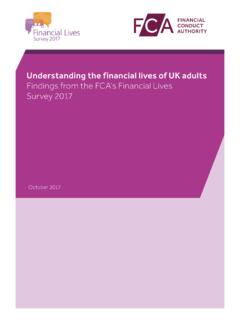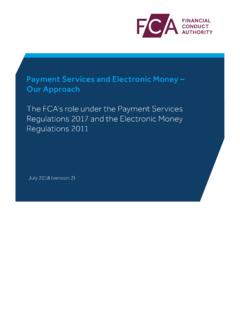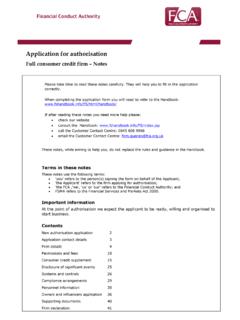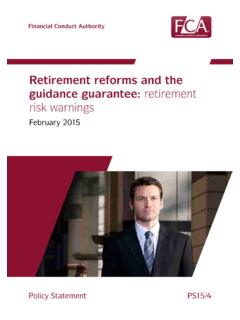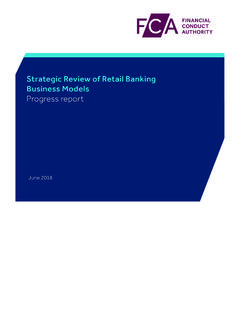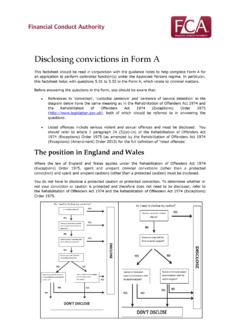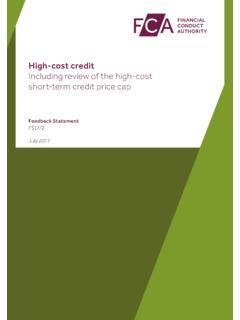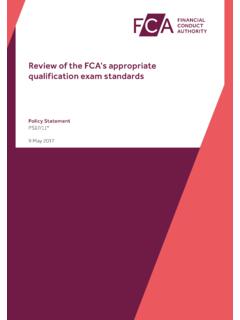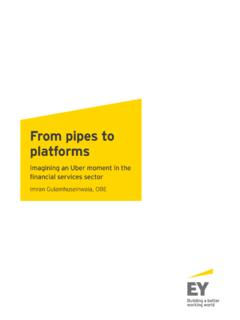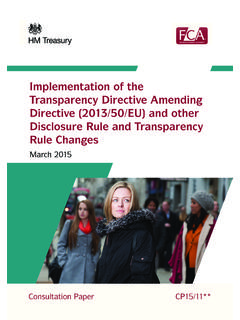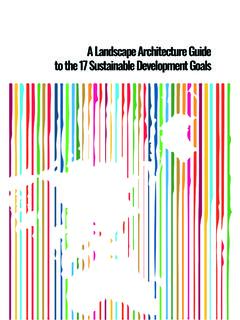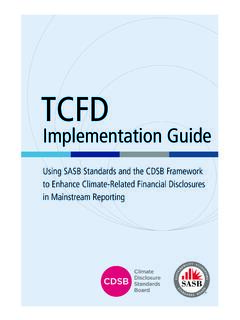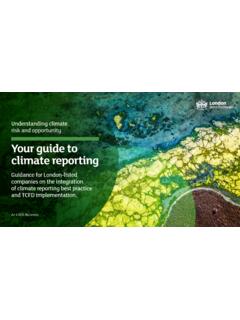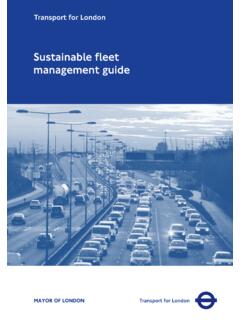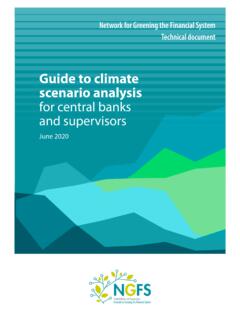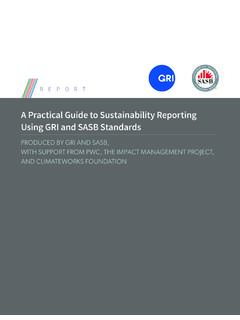Transcription of Climate Financial Risk Forum Guide 2021: Scenario Analysis
1 Climate Financial RISK Forum Guide 2020 Climate Financial RISK Forum Guide 2021 Scenario Analysis October 2021 2 Contents 1. Introduction .. 4 2. Climate Scenario Analysis in Financial firms .. 6 3. Climate Scenario Analysis key considerations .. 16 4. Evaluating Climate -related risks for banks .. 27 5. Evaluating Climate -related risks for insurance and asset managers .. 52 6. Portfolio alignment and construction .. 73 7. Future developments .. 91 Annex 1: Additional detail on NGFS scenarios .. 92 Annex 2: Resources .. 95 3 This chapter represents the output from the cross-industry Scenario Analysis Working Group of the Prudential Regulation Authority and Financial Conduct Authority s Climate Financial Risk Forum (CFRF).
2 The document aims to promote understanding, consistency, and comparability by providing guidance on how to use Scenario Analysis to assess Financial impacts and inform strategy/business decisions. This CFRF Guide has been written by industry, for industry. The recommendations in this Guide do not constitute Financial or other professional advice and should not be relied upon as such. The PRA and FCA have convened and facilitated CFRF discussions but do not accept liability for the views expressed in this Guide which do not necessarily represent the view of the regulators and in any case do not constitute regulatory guidance.
3 Copyright 2021 The Climate Financial Risk Forum 4 1. Introduction Purpose This chapter has been written by a cross-industry working group under the auspices of the Climate Financial Risk Forum (CFRF). It provides practical guidance on how to use Scenario Analysis to assess Climate -related Financial risks to inform firms strategy and business decisions. The content is aimed at banks, asset managers and insurers of all sizes, and may be of interest to other institutions, such as pension schemes. It describes current industry practice based on the results from the Global Association of Risk Professional s (GARP) Climate Risk Management Survey undertaken in Q2 2021.
4 This chapter builds on the previous CFRF Scenario Analysis Chapter included in the 2020 Guide and in particular, the iterative end-to-end Climate Scenario Analysis process set out in that Chapter. It provides further guidance for specific bank, insurance, and asset management use cases on how to identify potential exposures to Climate -related risks and assess their Financial impact using the latest scenarios developed by the Central Banks and Supervisors Network for Greening the Financial System (NGFS); as well as how to use Scenario Analysis to measure portfolio alignment with the Paris agreement and to aid portfolio construction.
5 5 Although we have presented the banks, insurers and asset managers use cases separately, we do recommend that all firms, regardless of their industry, consider the approaches set out in all these case studies as the principles discussed in the banking section may still be useful for insurers and asset managers and vice versa. Whichever use case is being considered, it is important to ensure that the uncertainties and limitations associated with Climate Scenario Analysis are well understood and clearly communicated when presenting the results to ensure they are interpreted and used appropriately. This chapter should be read in conjunction with the output from other cross-industry working groups of the CFRF, in particular the Risk Management and Disclosure chapters, as well as the Climate Data & Metrics Report.
6 Guus Schoorlemmer (Interim Group CRO of Aviva and Chair of CFRF Scenario Analysis Working Group) Scope This chapter is organised into six main sections: Section 2 covers the results of the GARP global Climate Risk Management Survey. This provides valuable benchmarking information; and gives a useful snapshot of the range of practices across the Financial system and the challenges and barriers that firms are facing. Section 3 explores key elements to consider when conducting Climate Scenario Analysis and provides an overview of the NGFS scenarios published in June 2021. This section also highlights some of the key challenges facing the user of Scenario Analysis .
7 Sections 4 & 5 consider how to evaluate transition and physical risks impacts for banks, insurance companies and asset managers using Scenario Analysis . Section 6 focuses on the use of Scenario Analysis to explore alignment of financing portfolio(s) with the objectives of the Paris Agreement. It also provides guidance on how utilising Scenario Analysis can aid portfolio construction. Section 7 sets out potential areas for future developments. We have consciously chosen to focus on transition and physical risks in this Guide rather than litigation risk. Without a sound understanding of risk, there can be no effective action.
8 Climate Scenario Analysis is a powerful tool for firms to better understand their Climate risks and this practical Guide will help firms take their Analysis to the next level. 6 2. Climate Scenario Analysis in Financial firms Climate Scenario Analysis is new for many firms, presenting distinctive challenges, such as access to the required data, modelling and resourcing. GARP promotes best practice risk management globally. But with Climate -related risk, the market and expectations are fast moving, making it difficult for firms to understand the status of emerging practices or how good their own approaches are. In 2019, the GARP Risk Institute ran its first global Climate Risk Management Survey ( Survey ).
9 For participating firms, it provided valuable benchmarking information; for others, it gave a useful snapshot of the range of practice across the Financial system and the challenges and barriers that firms were facing. The 2020 Survey mapped out the continuing journey and the 2021 Survey showed evidence of a growing sophistication and improvement in the quantification of Climate -related risks. This section presents results of a deep dive on the maturity of Climate Scenario Analysis practices in Financial firms, based on the results from GARP s Climate Risk Management Survey undertaken in Q2 2021. The 2021 survey comprised: 47 banks or building societies; 20 asset managers and 11 other firms (insurers, Financial market infrastructure).
10 Collectively, they have around $46 trillion of assets on their balance sheets, manage assets of close to $50 trillion and account for about $ trillion in market capitalization. The firms in the survey operate and assess their Climate -related risks in all regions of the world. Of these 78 firms, 55 (around 70%) reported that they have undertaken Climate Scenario Analysis . The Analysis presented in this deep dive focuses on the practices at these 55 firms; any percentages presented are of a total population of 55 firms, unless otherwise stated. Key takeaways Motivation: The most popular reasons for undertaking Climate Scenario Analysis is to identify risks and assess the Financial impacts of Climate change.
